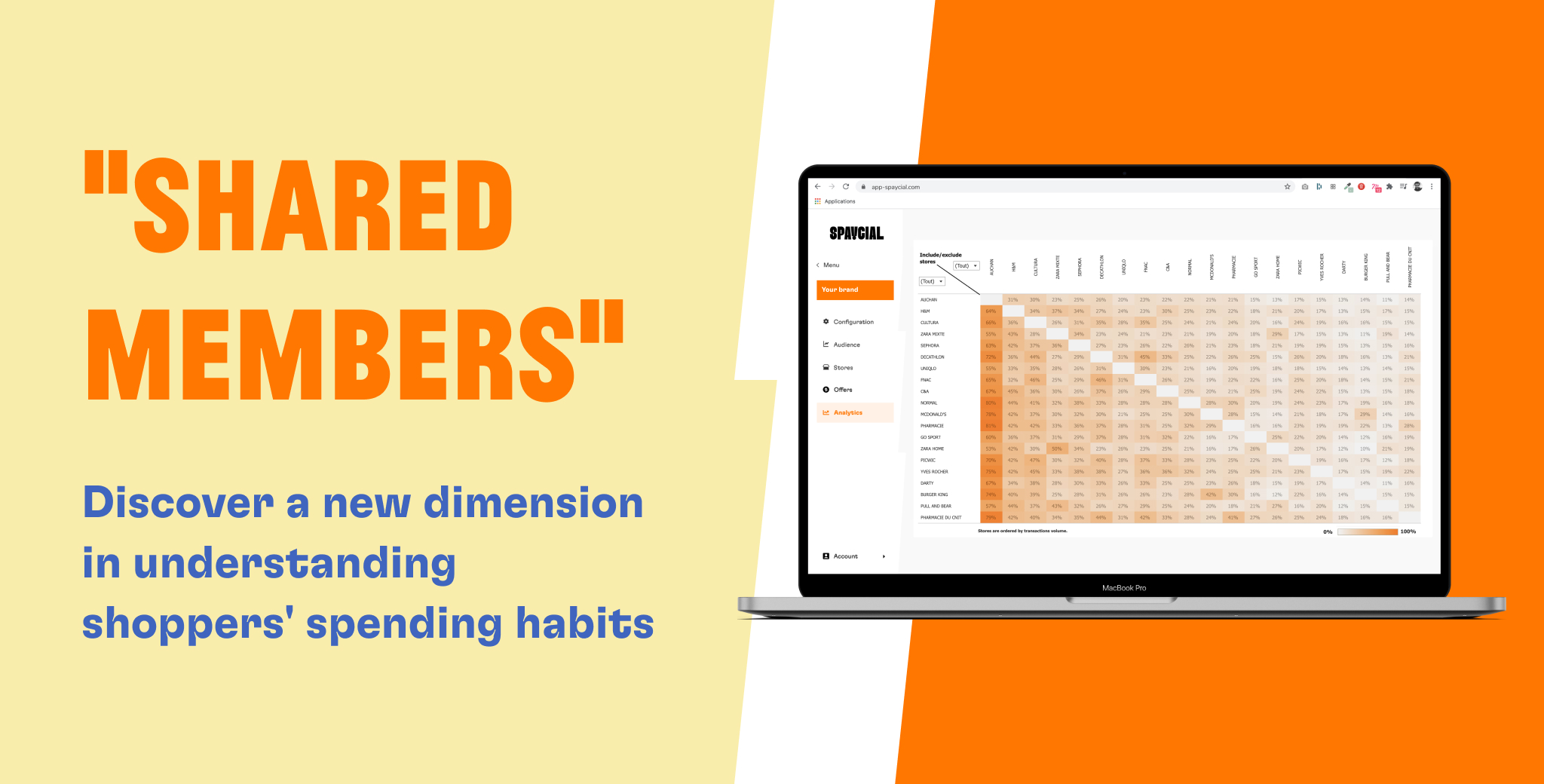Are you familiar with the concept of 'shared members'? This notion helps identify synergies between stores and give brands the ability to target shoppers like never before.
Secure access to shoppers' 360 data has opened the door to unique insights. Gone are the days of approximate traditional data, replaced by first-party and omnichannel payment data, a tool that is fully regulated by French and European legislation, a key to successful marketing targeting and to ensuring that shoppers are only reached at the right moments with the right offers.
How does it work? Thanks to the analysis of payment data, a brand, a retailer or a shopping center suddenly has access to data sets such as share of wallet, online/offline cannibalisation of the sales channel, catchment area, halo effect, distribution of purchases, budget spent, on which brands, or even "shared members"... the resulting tables for marketing teams are infinite (although they still need to work with the approved service provider!)
The last notion mentioned, "shared members', is of particular interest to us because it allows us to visualize the synergies between each store in the same program and gives brands the possibility of targeting new, inactive or low-carton shoppers like never before.
Should I target Paul? On which product? At what time? With what type of offer? How do I activate it, with which campaign?
So many questions the notion of shared members will help brands to answer, to boost their sales and reduce their churn, thanks to the enrichment of their CRM.
This concept is based on a detailed analysis of a shopper's purchasing journey in order to understand him or her and to know if he or she would be a potentially interesting shopper to activate for a brand, online or offline, on the weekend rather than during the week, etc.
Capturing the right shoppers for retailers, improving the retail mix of shopping centres
Based on the analysis of this journey, a segmentation is made to classify the shopper as a potential asset for a brand or not. Consider a multi-brand matrix which tells you that 80% of the people who made a purchase at a particular fast fashion brand also made a purchase at a cosmetics brand over a given period.
- The window of opportunity to understand buying behavior and how to contact these shoppers on cross-sell offers becomes a strategic axis for synergistic offers.
- This notion also allows brands in the same sector to see if they are capturing the right shoppers or not, thanks to the analysis of the shopper journey and behavior: a fast fashion brand could thus see that Paul, who has a fast fashion budget of 100€ per month, spends only 10€ at its place and 90€ at its competitor's. It would then know that to get incremental budget, Paul is a priority target, a "power shopper", to make him come and spend more with it.
- For a centre, it also allows to rethink and improve its retail mix. The analysis offered by shared members allows shopping centres to improve their overall shopping experience based on shopper journey analysis. Indeed, seeing that a fashion brand shares a large number of shoppers with one of the centre's restaurants makes it possible to say that this restaurant has a real value in the overall experience and that the focus of investment should be on the latter.

